

Ferdinand Gregorovius (German: [ˈfɛʁdinantɡʁeɡoˈʁoːvi̯ʊs] ; 19 January 1821, Neidenburg, East Prussia, Kingdom of Prussia – 1 May 1891, Munich, Kingdom of Bavaria) was a German historian who specialized in the medieval history of Rome. [1]


Ferdinand Gregorovius (German: [ˈfɛʁdinantɡʁeɡoˈʁoːvi̯ʊs] ; 19 January 1821, Neidenburg, East Prussia, Kingdom of Prussia – 1 May 1891, Munich, Kingdom of Bavaria) was a German historian who specialized in the medieval history of Rome. [1]
Gregorovius was the son of Neidenburg district justice council Ferdinand Timotheus Gregorovius and his wife Wilhelmine Charlotte Dorothea Kausch. An earlier ancestor named Grzegorzewski had come to Prussia from Poland. Members of the Gregorovius family lived in Prussia for over 300 years, and produced many jurists, preachers and artists. One famous ancestor of Ferdinand's was Johann Adam Gregorovius, born 1681 in Johannisburg, district of Gumbinnen.
Ferdinand Gregorovius was born at Neidenburg, East Prussia (now Nidzica, Poland), and studied theology and philosophy at the University of Königsberg. In 1838, he joined the student association, the Corps Masovia. After teaching for many years, Gregorovius took up residence in Italy in 1852, where he remained for over twenty years. In 1876, he was made an honorary citizen of Rome, the first German to be awarded this honor. A street and a square are named after him. He eventually returned to Germany, where he died in Munich.
He is best known for Wanderjahre in Italien, his account of the travels on foot that he took through Italy in the 1850s, and the monumental Die Geschichte der Stadt Rom im Mittelalter (History of Rome in the Middle Ages), a classic for Medieval and early Renaissance history. He also wrote biographies of Pope Alexander VI and Lucrezia Borgia, as well as works on Byzantine history and medieval Athens, and translated Italian authors into German, among them Giovanni Melis. According to Jesuit Father John Hardon, S.J. Gregorovius was "a bitter enemy of the popes." [2]
Pope Boniface IV, OSB was the bishop of Rome from 608 to his death. Boniface had served as a deacon under Pope Gregory I, and like his mentor, he ran the Lateran Palace as a monastery. As pope, he encouraged monasticism. With imperial permission, he converted the Pantheon into a church. In 610, he conferred with Bishop Mellitus of London regarding the needs of the English Church. He is venerated as a saint in the Catholic Church with a universal feast day on 8 May.

Alfred von Reumont was a German scholar and diplomatist.
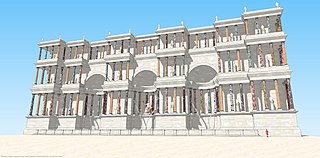

The counts of Tusculum, also known as the Theophylacti, were a family of secular noblemen from Latium that maintained a powerful position in Rome between the 10th and 12th centuries. Several popes and antipopes during the 11th century came from their ranks. They created and perfected the political formula of noble-papacy, wherein the pope was arranged to be elected only from the ranks of the Roman nobles. The Pornocracy, the period of influence by powerful female courtesans of the family, also influenced papal history.
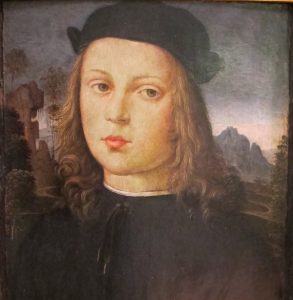
Alfonso of Aragon, Duke of Bisceglie and Prince of Salerno of the House of Trastámara, was the illegitimate son of Alfonso II King of Naples and his mistress Trogia Gazzella. His father, cousin of King Ferdinand II of Aragon, abdicated in favour of his legitimate son Ferdinand II of Naples.

Abraham (Adolf) Berliner was a German theologian and historian, born in Obersitzko, in the Grand Duchy of Posen, Prussia. He was initially educated by his father, who was the teacher in Obersitzko. He continued his education under various rabbis, later studying at the University of Leipzig where he received the degree of doctor of philosophy.

Karl Julius Beloch was a German classical and economic historian.
Hartmut Boockmann was a German historian, specializing in medieval history.
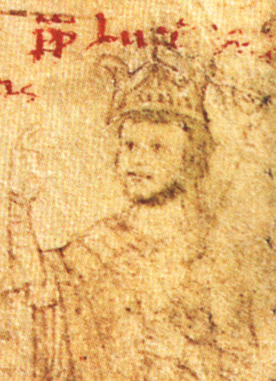
The 1181 papal election followed the death of Pope Alexander III and resulted in the election of Pope Lucius III. This was the first papal election celebrated in accordance with the decree Licet de evitanda discordia, promulgated in the Third Lateran Council in 1179, which established that the pope is elected by a majority of two thirds votes.

The naval battle of Ponza was fought in early August 1435, when the Duke of Milan dispatched the Genoese navy to relieve the besieged town of Gaeta, which was currently under threat from the King of Aragon.
Oskar Höcker was a German author of historical novels for children and a stage actor.
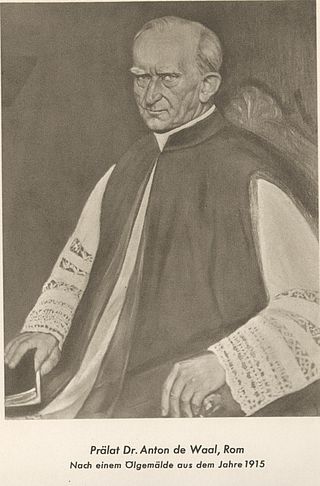
Anton Joseph Johann Maria de Waal was a German Christian archeologist and Roman Catholic church historian. He established the Collegio Teutonico del Campo Santo and carried out numerous archeological excavations in Rome.

The 1099 papal election following the death of Pope Urban II took place on 13 August 1099. Before his death, Urban had designated Cardinal Rainerius da Bieda as his successor. The cardinal-electors, with the consent of the lower Roman clergy, chose Rainerius, who, after a flight and over his considerable objections, accepted and took the name Paschal II. He was consecrated a bishop and crowned pope on the next day.
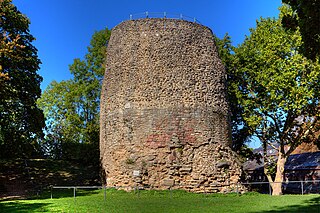
The Drususstein is a nearly 20 metres high masonry block of Roman origin on the grounds of the citadel of Mainz, Germany. It was originally cased in marble. Researchers now largely accept that this is the structural remnant of the cenotaph mentioned by writers like Eutropius and Suetonius, erected in 9 BC by Roman troops in honour of the deceased general Drusus, in Mogontiacum.
Werner Eck is professor of Ancient History at Cologne University, Germany, and a noted expert on the history and epigraphy of imperial Rome. His main interests are the prosopography of the Roman ruling class and the ancient city of Cologne, Colonia Claudia Ara Agrippinensium. He also researched the Bar Kokhba revolt from the Roman point of view.

Michael Matheus is a German historian.

The Soest Feud, or Feud of Soest, was a feud that took place from 1444 to 1449 in which the town of Soest claimed its freedom from Archbishop Dietrich of Cologne (1414–1463), who tried to restore his rule. The town of Soest opposed this attempt on 5 June 1444 by accepting a new suzerain, John I, the Duke of Cleves-Mark, who guaranteed the town its old rights as well as new ones. As a result Emperor Frederick III imposed the imperial ban on the town. The victory of the town meant that Soest had de facto more freedom than a free imperial city until it was annexed by Prussia, but at the same time it had to forfeit its economic power because it was now an enclave within Cologne's territory.
Roscemanno, O.S.B.Cas. was a Roman Catholic Cardinal and Deacon of San Giorgio in Velabro.
Amicus, O.S.B. was a 12th century Roman Catholic Cardinal, and Cardinal-priest of the titulus of Ss. Nereo ed Achilleo in Rome.

Ardicio de Rivoltela was a cardinal of the Roman Catholic Church. He was a native of Piadena (Platina), in the diocese of Cremona in Lombardy. The appellation "de Rivoltela" is mentioned only once, and its significance is unclear.